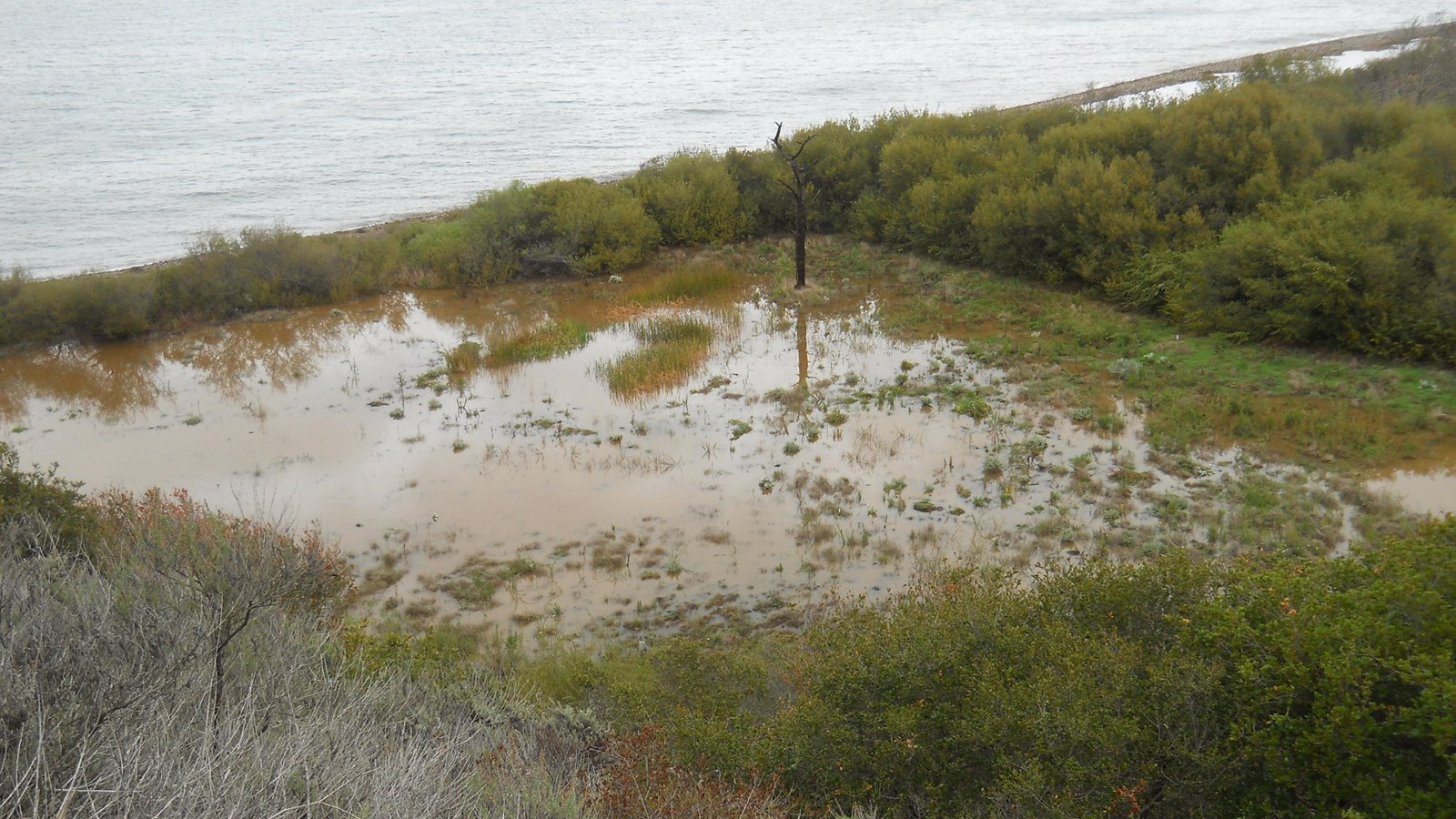Last updated: April 10, 2021
Place
Prisoner's Harbor Wetland

Historical/Interpretive Information/Exhibits
Prior to alterations in the late 1800s, Prisoner's Harbor was home to the largest coastal floodplain wetland and stream channel on the northern islands. This rare habitat, comprised of a fresh water stream, coastal lagoon/wetland, and riparian woodland, provided respite from the long dry summers for a diverse array of species including the island fox. The wetland most likely served as a resting and feeding stop for migratory birds and nesting habitat for resident waterfowl.
Over the past 150 years many changes were made to the area-the creek was rerouted and channelized; the wetland was filled in with rock and gravel; non-native plants such as eucalyptus, stone pines, and kikuyu grass were introduced; and a berm, buildings, roads, and corrals were constructed. These changes degraded the wetland ecology and compromised its effectiveness as a natural floodplain.
To restore the natural function and ecology of the wetland, the National Park Service and its partners removed the historic corrals and scale house in the fill area, removed the fill material, reshaped the landscape into wetland habitat, and removed 250 feet of artificial berm to allow the wetland to flood naturally. In addition, non-native species such as eucalyptus were removed and native riparian and woodland species were planted.
The value of this project is significant as coastal wetlands in California are increasingly rare-over 90% have been eliminated. The restored wetland will provide important habitat for wildlife and native plants.
